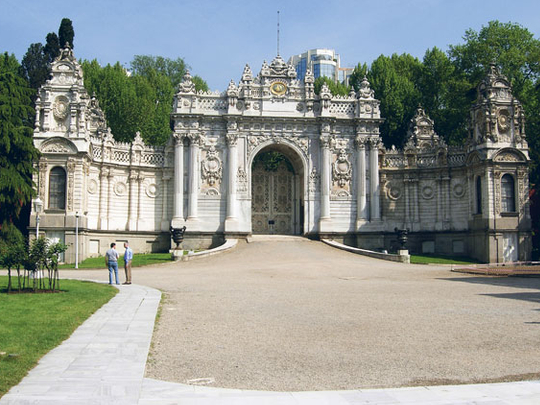
That was the bed he spent his last moments on, the glass cabinet full of medicine bottles stands just as they did then and the clocks have been frozen in time — 9.05am — the time when Mustafa Kemal Ataturk, the founder of the Turkish Republic and its first president, breathed his last at the grand Dolmabahce Palace in Istanbul.
Preserved glory
Ataturk, who fashioned the Turkish Republic and gave it its modern outlook, died on November 10, 1938, in one of the rooms of the Dolmabahce Palace, which was built by the Ottoman rulers in the 19th century and is a prime example of their lavish lifestyle. He was 57.
The double bed that Ataturk died on is covered with the Turkish flag, red with the sickle moon and stars. The room is bare, save the bed, a sofa and a mirror on the wall. There is pin-drop silence as tourists stand in queue, peep reverentially into the room and leave, as a strict-looking but polite guard keeps watch.
No one is allowed to touch anything, not even brush against the doors; a maroon carpet marks the path that tourists are to take while looking at the marvels of the Dolmabahce Palace, built by the Ottoman Empire's 31st sultan, Abdülmejid I, between 1843 and 1856.
And no photographs, please, the guards tell us firmly.
A little beyond the room where Ataturk died is a large, ornate hall, originally a room where the sultans held meetings with special guests but used by Ataturk to hold his intense meetings with his chosen team as they deliberated on the future of Turkey. Ataturk moved into the Dolmabahce Palace in 1927 and stayed there till his death. His last days were spent in ill health.
Near his bedroom is another small room with a narrow bed, a glass cabinet full of bottles, little cardboard boxes that contained his medicines, and a wheelchair. "Ataturk died of cancer," says our tour guide Derya Kutukcu.
"Ataturk hardly slept or ate. He would sleep just two or three hours a day and work all the time. During his last days, when he was too ill to walk, he would be taken around in the wheelchair but he did not want people to see him in that incapacitated state," Kutukcu said.
The rest of Dolmabahce Palace is a hallmark of the opulence of the Ottoman sultans. The ceilings of the 285-room palace are decorated with ornate paintings done with gold. There are 44 large halls, 68 toilets and six large hammams, including a separate one for the harem.
European influences
Dolmabahce Palace is the first built by the Ottoman rulers in the European style and reflects the European influences on their lifestyle. It was built by a Turkish and an Armenian architect. The halls have huge chandeliers from England and one of the staircases leading to the upper floor has banisters of crystal.
The tall pillars around the staircase look as if they are made of polished granite. "No, they are just painted to look like that," Kutukcu tells us. The neat painting job was done by master artists in the 19th century.
Just at the top of the staircase is a wrought-iron carving of elephants sitting around palm trees. You guessed it right! "It is a gift from India," a smiling Kutukcu tells us but she was unable to inform us about who gave it to the Ottoman sultans and when.
Abdülmejid was a patron of the arts and himself a master painter and craftsperson. The library contains bookshelves, a large table and chairs, all crafted by him.
Paintings made by him, including those of his wife, adorn the walls of the palace.
When the sultans entertained guests in the main hall, the women could get a peek into the proceedings from two grilled windows from their harem.
Fourteen tonnes of gold leaf were used to gild the ceilings of the 45,000-square-metre palace.
Turkey became a republic on October 29, 1923, ending more than 600 years of rule by the Ottoman sultans.
FLY... Emirates
Istanbul, Turkey
From Dubai Dh1,935
— Information courtesy the Holiday Lounge by Dnata. Ph: 04 3492886.







